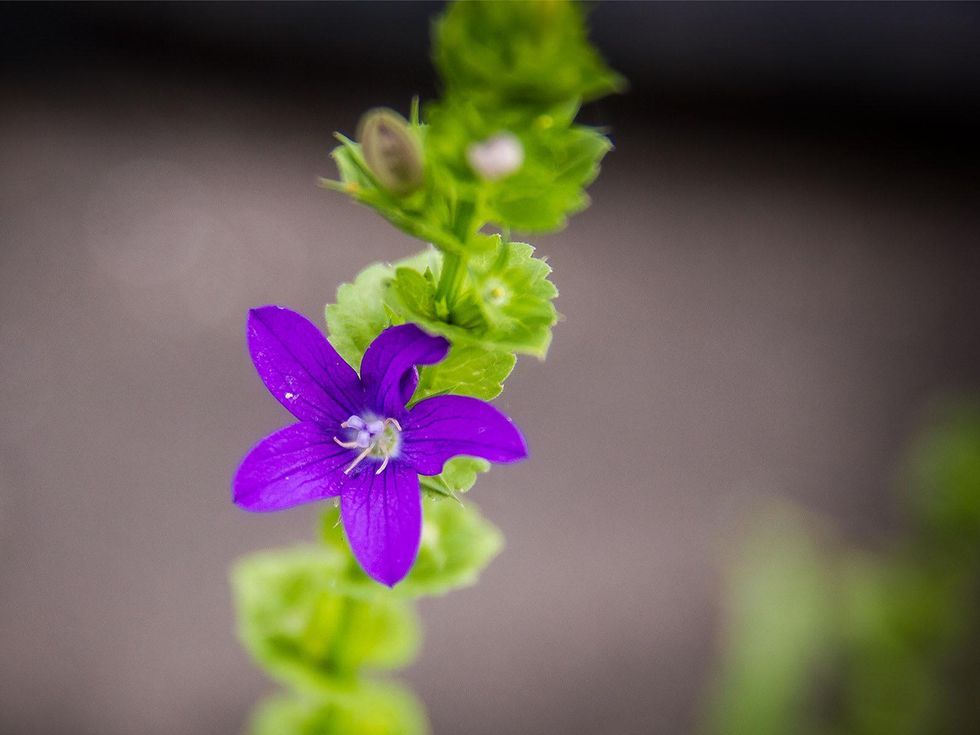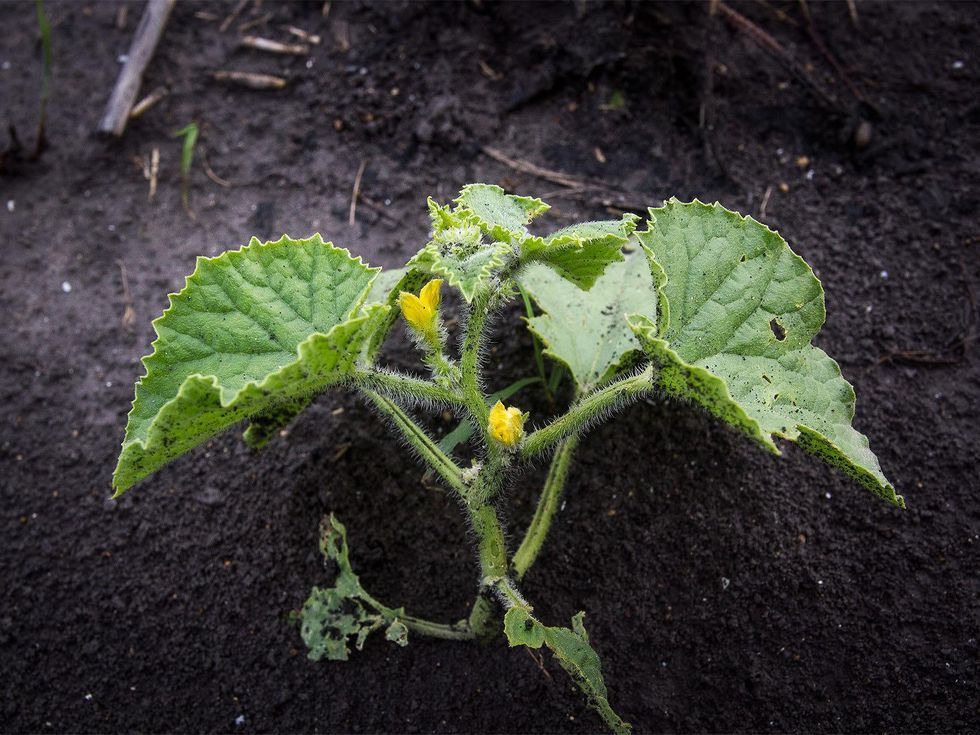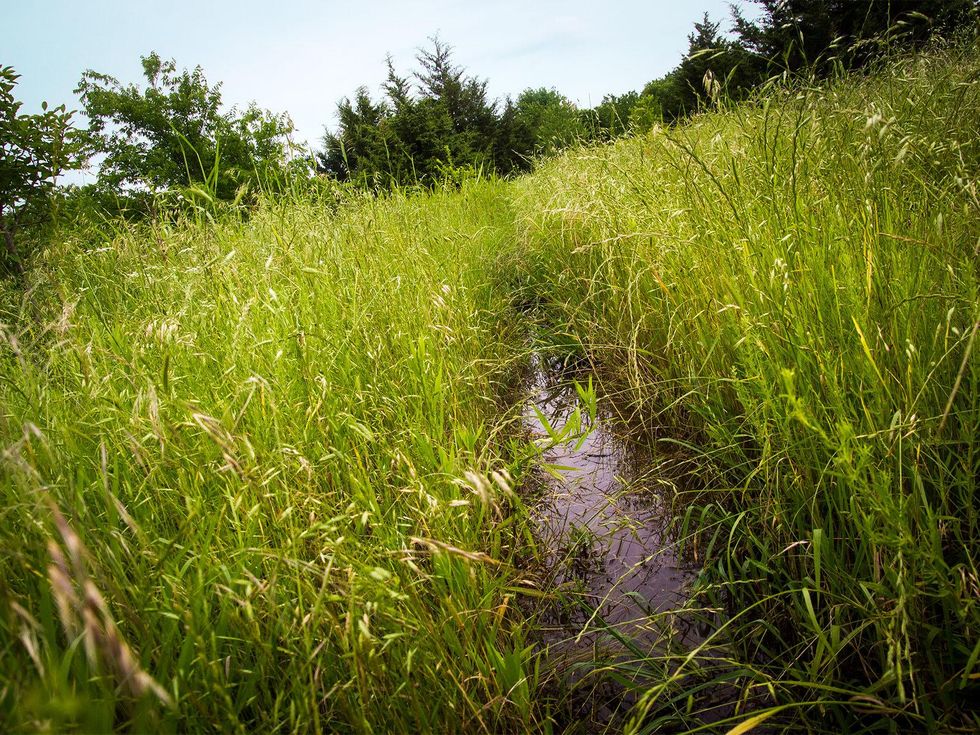The Farmer Diaries
Rains bust drought but prove catastrophic to Texas farmer
Growing crops through several dry spells in Texas has given me a superstitious fear that wanting the rain to stop will make it go away for good.
We're wet now, but it comes after a four-year long drought with a record-breaking 71 consecutive days of temperatures above 100 degrees and no rain, one that caused a huge tree die-off and threatened crop production. Although rains came each year afterward, they were sparse.
Finally this year, we've had enough precipitation to make up for years of deficits and replenish the moisture in the soil, like recharging some sort of water battery back to 100 percent. We need every drop of this year's constant rain.
I feel almost ungrateful to admit that I'd like to see nonstop sunshine. But as I slog through muddy pathways after each rain and try to avoid ankle-deep floodwater on my way out to see if any of my melon crop has survived, I confess that I've had enough of rain and would like to see it end for a little while.
Before the rains began two months ago, I planted a few tomatoes, two eggplants, one tomatillo, a raised garden bed of carrots and several rows of Israeli melons. My wife had sown seeds for several varieties of flowers and ornamental gourds; my father took care of the potatoes and onions. I had planned on having so much more in the field by now, but the muddy conditions made work impossible.
Most of the flowers have drowned, even in the raised beds, as they were not built up high enough to stay above pools of water that have collected after each downpour. The carrots I harvest from last fall's sowing are rotten, and the ones I sowed in spring are not yet ready to pick.
My melons have only grown an inch or two when they should have sprawled out by now into vines as long as six feet. Of hundreds of seeds sown to make a long row of ornamental gourds, only two seeds sprouted. The rest either rotted or were washed away when floodwater accumulated and then receded.
I don't know the status of the onions and potatoes; they're too far into the mud and standing water to assess.
I'm merely assessing, not complaining. I'll have gotten a late start on sowing this year's crops, but the region has risen out of its water woes, and that gives me a sense of relief.
Drier weather is certain to come by June, and there will still be time to grow most everything because we are in Texas, a state with one of the longest growing seasons in the country. States like Minnesota may only have four good months of warm, frost-free weather; we have nearly nine, and the rains have used up only two and a half.
Here's what's on my list to plant in the remaining six months:
- Melons: Watermelons, Israeli melons, honeydews, and any other muskmelon or cantaloupe I want to plant still have plenty of time to be sown and to mature with sweet fruit long before the November first frost ends the growing season. Planted in June, varieties of melons with even the longest growing periods should be ready by September. Rocky Ford melons and Sugar Baby watermelons will be ready by the end of August.
- Summer squash: If I sow yellow crookneck squash and zucchini by the first of June, I should be able to make my first harvest just 44 days later, around mid-July. In fact, successively planting squash throughout the summer is the better way than insecticides to deal with squash bugs, though nothing tops skunks.
- Winter squash and pumpkins: Like melons, winter squash and pumpkins need months to grow, but as long as they're planted by mid-July, they'll have plenty of time to mature. For pumpkins to be ready by Halloween, though, a June sowing is recommended. Maybe this year, I will finally try out butternut squash, and maybe spaghetti squash, for a change.
- Okra: Before the rains began this year, my wife was able to plant only a handful of okra, and it hasn't grown fast in such cool weather. As soon as it dries out, we'll plant rows of okra. Planted by the first week of June, it will still yield by the end of July and keep producing for several months.
- Tomatoes: When temperatures at night stay above the mid-70s, pollination of tomato blooms becomes inefficient, which makes it seem like tomatoes stop producing in the summer. But by jostling the plants in the morning each day, they can indeed be made to produce. What's more, tomato plants intended for fall production are planted by midsummer, so there's ample opportunity to enjoy juicy, red, delicious tomatoes this year. To make up for lost time, I'll concentrate on varieties that produce small fruit, such as Texas Wild and Punta Banda tomatoes, plus a few red cherry types.
- Peppers: I don't know why I even bother with planting peppers in early spring. It's heat that triggers their growth and fruit set, so planting them in a week or two when the soil dries a little is going to be good timing.
- Carrots: To germinate, carrot seeds must be in contact with soil that's constantly moist. That's an easy condition to maintain with the soils as saturated as they are. I'll continue to plant carrots throughout June.
- Cucumbers: I've planted no cucumbers outdoors so far this year, but as soon as the soil dries out some, I'll start successively sowing cucumber seed, starting a few vines every two weeks until September. Some varieties will be ready to eat just 55 days after the seed goes into the ground.
- Eggplant: After setting out transplants, eggplants should start yielding in two and a half months. I expect fruits by September if not a little earlier in August, and then each plant will give me a weekly harvest until the first frost.
- Herbs and flowers: Basil, cilantro, dill, parsley and just about every other herb can be sown almost about anytime during the growing season. There's also no reason not to sow zinnias, petunias, morning glories and whatever else needs warmth, as long as I keep the soil moist where they're planted.
- Sweet Potatoes: May through June is the ideal time to plant sweet potatoes, so with this crop, I've not been delayed by the rainy weather at all.




